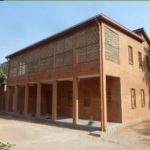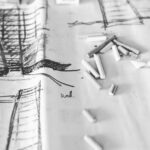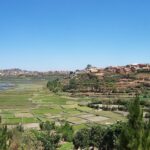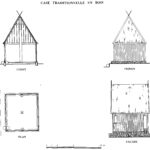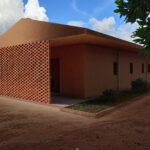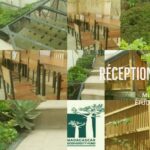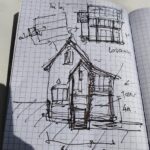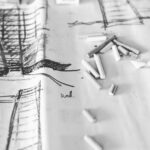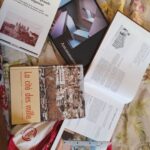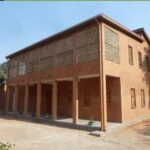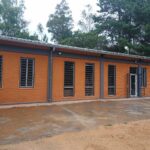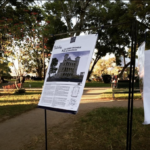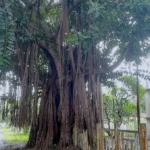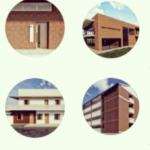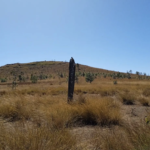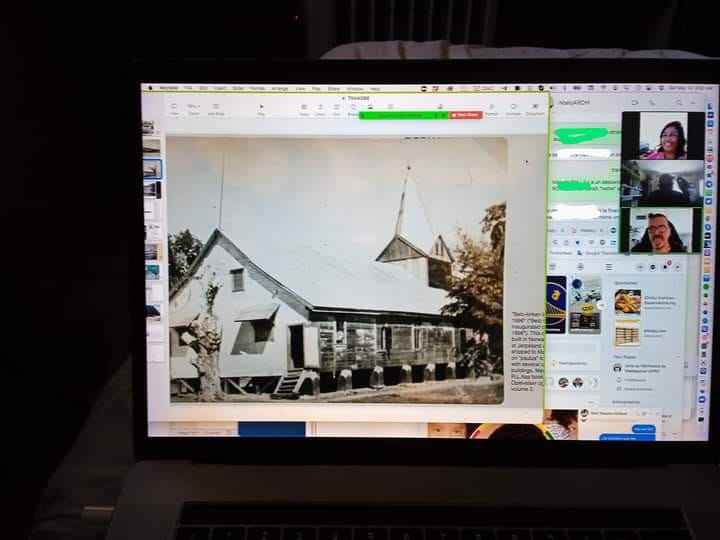
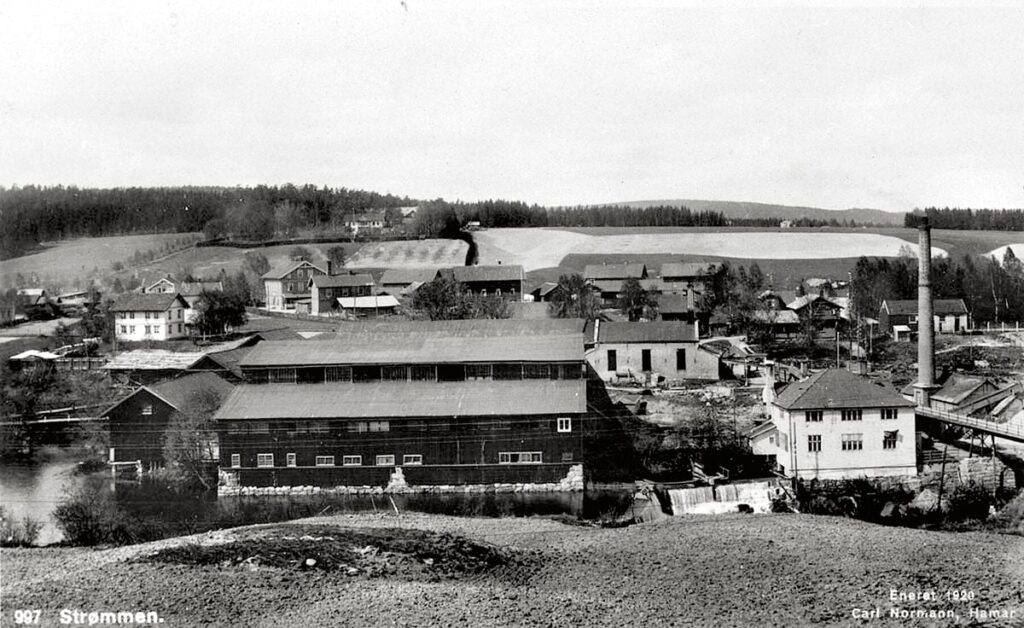
(…) At the end of the 19th century a new architectural fashion arose in Scandinavia based on traditional wooden houses. This romantic movement came to be knowns by the name of Dragistil (Dragon Style), a reference to the dragon heads that used to adorn Viking ships. The STRØMMEN TRÆVAREFABRIK outside Oslo, established in the year 1884, was one of the first big steam-powered sawmills to manufacture and export ready-made wooden houses. The houses were built from sawn or milled logs, numbered and dismantled for transportation and reassembled on the buyer’s site. Some order standard models, others custom-made houses designed by architects. In a sense, we can say that Strømmen Trævarefabrik was a forerunner of today’s IKEA. https://www.dailyscandinavian.com/the-exciting-story-of-a-norwegian-house-manufacturer/ The very first two huts were built on Cape Adare in the Antarctic in 1899. The main house is still in good shape.
(…) A small wooden Lutheran chapel, prefabricated by Strømmen Trævarefabrik, Norway, was purchased at a cost of 10,400 kroner (c £600) and shipped to Grytviken The church was designed by Larsen’s son-in-law, architect Adalbert Kielland (1879-1956), who had married Larsens daughter Signe in 1907 in Buenos Aires; it had seating for 200 persons, a writing and reading room. A library was later installed. Work on the construction of the church started on 25 November and by 14 December it was nearly complete. Dictionary of Falklands Biography LOKEN, KRISTEN 1885-1975 https://www.falklandsbiographies.org/biographies/loken_kristen
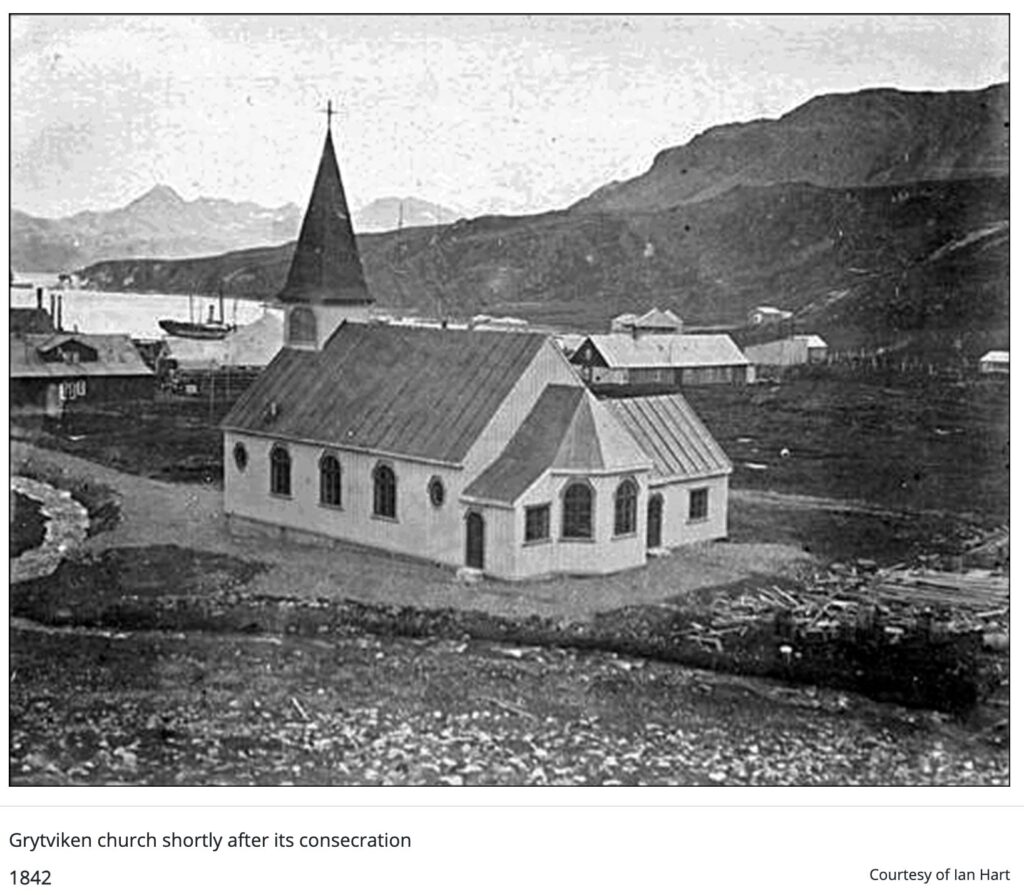
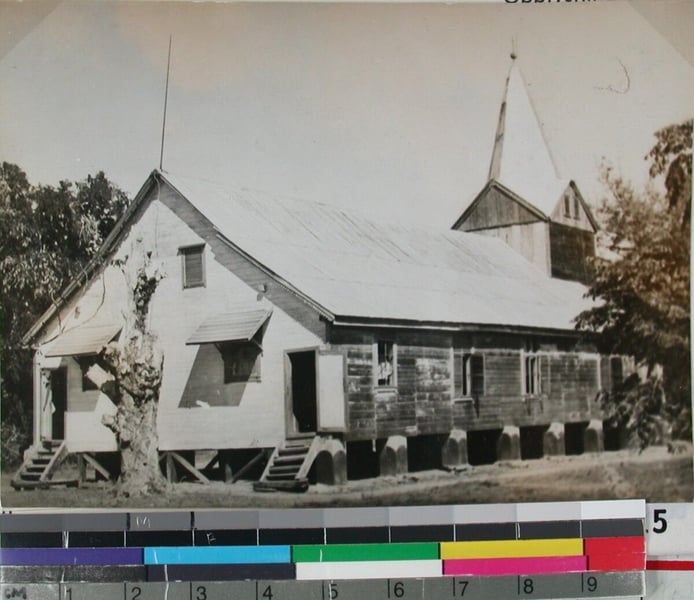
Here is the summary post: https://www.facebook.com/jogany/posts/10158524353891129
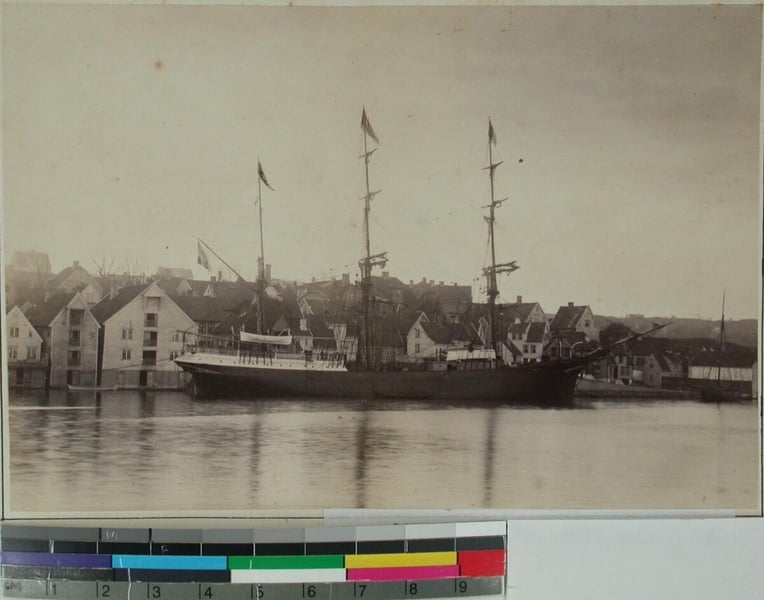
So this is what I have been sharing to Thomas Klakegg a journalist from Jørpeland, Norway. After he contacted me this morning about the shipment of the Paulus a boat heading to Madagascar around 1886 :
I just found out the link between prefabricated churches and lutheran missions in Madagascar : Gabriel Kielland Hauge (1857–1940) was an engineer trained in Dresde Germany and founder of Strømmen Trævarefabrik AS and son of Andreas Hauge (1815 – 1892) a Norwegian priest secretary of the Norwegian Missionary Society in 1850.
https://en.wikipedia.org/wiki/Andreas_Hauge
Strømmen Trævarefabrik was established in 1884 and I re-read 1st paragraph :
“As early as 1886 , the factory received a request for the delivery of a church to Madagascar , however, it does not appear that this was carried out. But in 1887, Attempts were made to deliver complete houses, and it is clear that simple summer houses were produced the same year.”
https://lokalhistoriewiki.no/wiki/Str%C3%B8mmen_Tr%C3%A6varefabrik
it carried out !
It brought houses called mission stations and churches to Sakalava region of Madagascar and helped them establish their communities. Moreover their good works were joined by Americans who dared to bring houses (again) to Anosy and Androy regions while Norwegian were kept busy building Antsirabe from scratch and oven-burnt bricks.
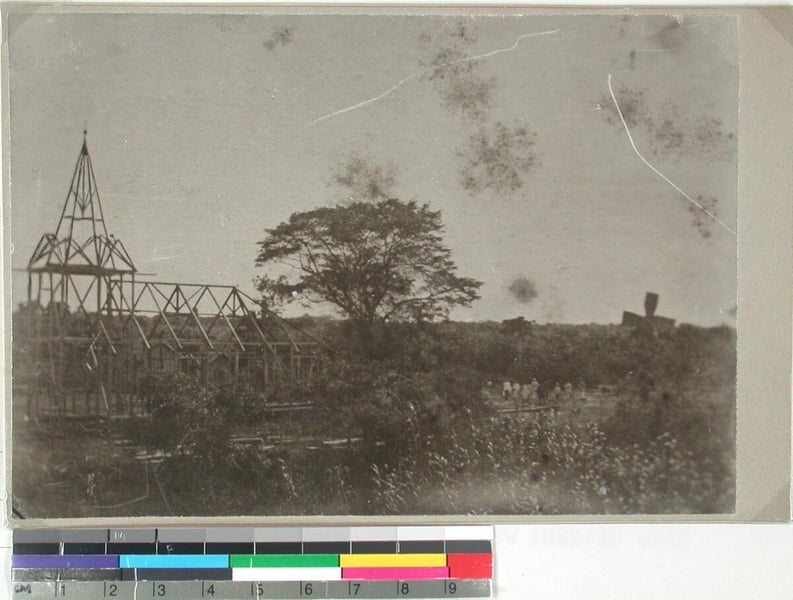
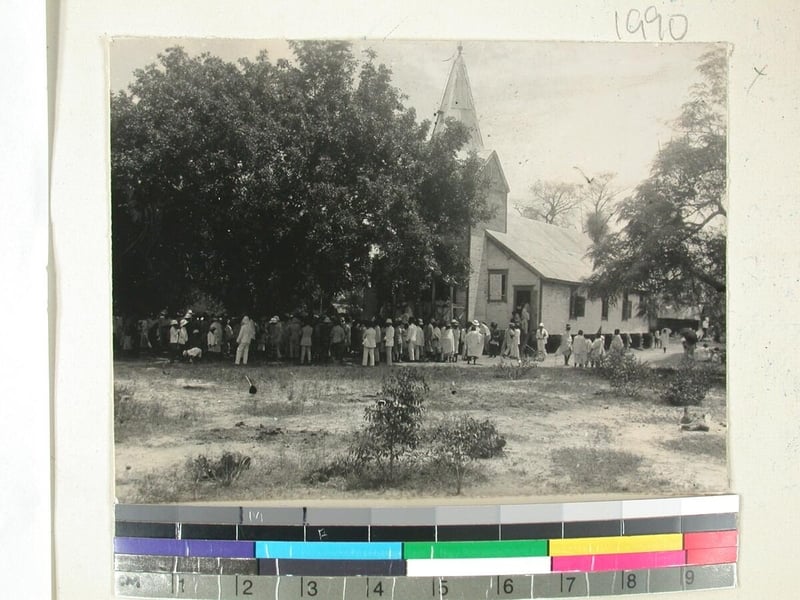
“Bethel stasjonskirke” (“Bethel mission station, the church”). This is the first wooden church in West Madagascar and was founded by Reinert Larsen Aas in 1882 Morondava, Madagascar, . He was a missionary in Madagascar from 1880-1907. The church has been widened with a n entrance door to the right.
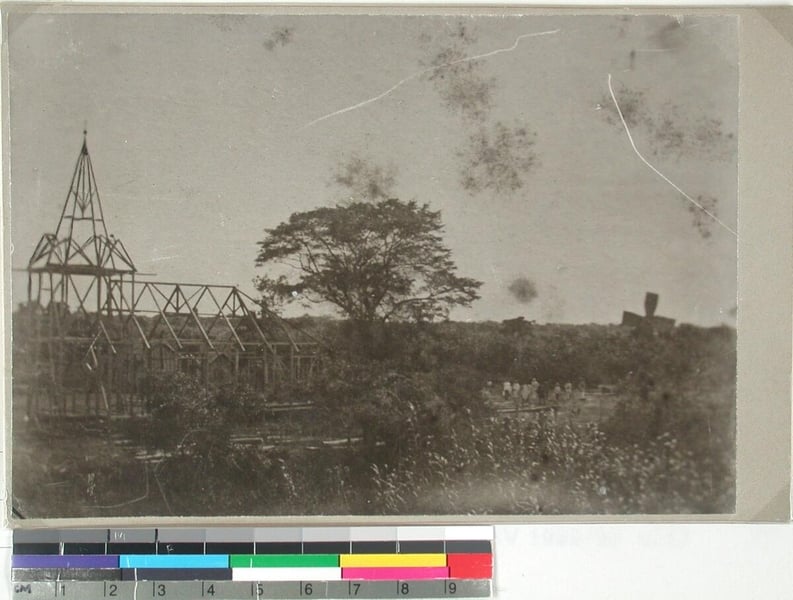
“if they only read the catechism and the Bible stories in Sakalava, they will be strangers in their Bible when they are going to read it, since it is published in the Hova dialect. – NMS 1924in 1928, Fagereng suggested to translate the New Testament into Sakalava in order to “give the Sakalava what they need the most : God’s word in their own language”. – NMS 1928the CM, consisting of Norwegian missionaries and Malagasy converts, rejected the idea as theu thought this would create a conflict between Hova and Sakalava.
– The Norwegian Mission’s Literacy Work in Colonial and Independent MadagascarBy Ellen Vea Rosnes

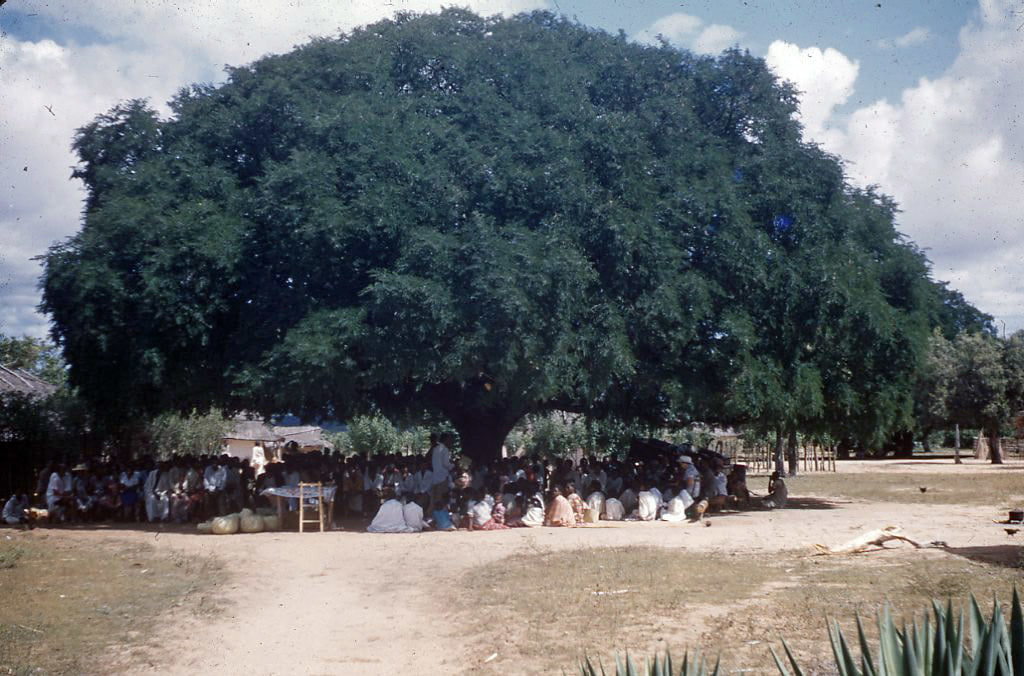
Norway back in 1880s started industrializing their economy, dizains of wood prefabricated houses were sent around the world. Madagascar, thanks to Norwegian Missionary Society, was the first country in the world to see them. fb.watch/eiiN6K3ry8/
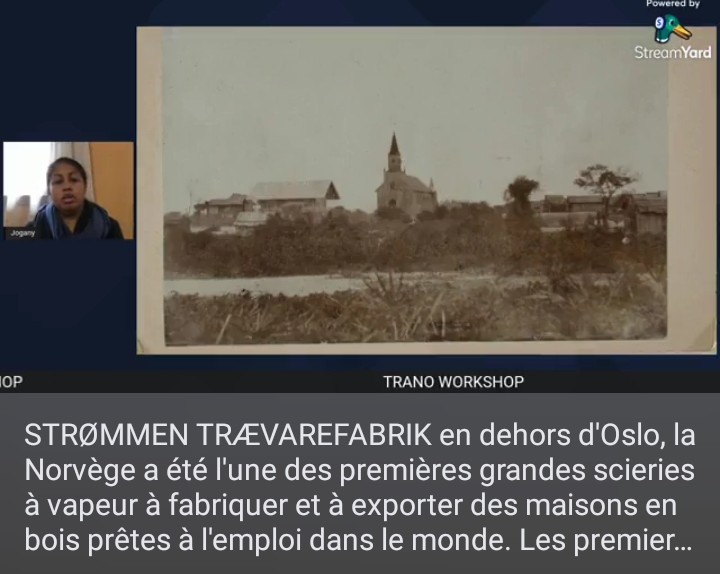
https://www.facebook.com/tranoarchitecture/videos/963376454458823



